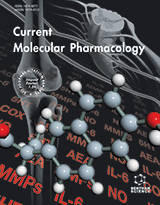Abstract
The structural analysis of class B G protein-coupled receptors (GPCR), cell surface proteins responding to peptide hormones, has until recently been restricted to the extracellular domain (ECD). Corticotropin-releasing factor receptor type 1 (CRF1R) is a class B receptor mediating stress response and also considered a drug target for depression and anxiety. Here we report the crystal structure of the transmembrane domain of human CRF1R in complex with the small-molecule antagonist CP-376395 in a hexagonal setting with translational non-crystallographic symmetry. Molecular dynamics and metadynamics simulations on this novel structure and the existing TMD structure for CRF1R provides insight as to how the small molecule ligand gains access to the induced-fit allosteric binding site with implications for the observed selectivity against CRF2R. Furthermore, molecular dynamics simulations performed using a full-length receptor model point to key interactions between the ECD and extracellular loop 3 of the TMD providing insight into the full inactive state of multidomain class B GPCRs.
Keywords: CRF1R, translational non-crystallographic symmetry, molecular dynamics, GPCR, metadynamics, CP-376395.
Graphical Abstract
Current Molecular Pharmacology
Title:Decoding Corticotropin-Releasing Factor Receptor Type 1 Crystal Structures
Volume: 10
Author(s): Andrew S. Dore, Andrea Bortolato, Kaspar Hollenstein, Robert K.Y. Cheng, Randy J. Read and Fiona H. Marshall*
Affiliation:
- Heptares Therapeutics Ltd, BioPark, Broadwater Road, Welwyn Garden City, Herts, AL7 3AX,United Kingdom
Keywords: CRF1R, translational non-crystallographic symmetry, molecular dynamics, GPCR, metadynamics, CP-376395.
Abstract: The structural analysis of class B G protein-coupled receptors (GPCR), cell surface proteins responding to peptide hormones, has until recently been restricted to the extracellular domain (ECD). Corticotropin-releasing factor receptor type 1 (CRF1R) is a class B receptor mediating stress response and also considered a drug target for depression and anxiety. Here we report the crystal structure of the transmembrane domain of human CRF1R in complex with the small-molecule antagonist CP-376395 in a hexagonal setting with translational non-crystallographic symmetry. Molecular dynamics and metadynamics simulations on this novel structure and the existing TMD structure for CRF1R provides insight as to how the small molecule ligand gains access to the induced-fit allosteric binding site with implications for the observed selectivity against CRF2R. Furthermore, molecular dynamics simulations performed using a full-length receptor model point to key interactions between the ECD and extracellular loop 3 of the TMD providing insight into the full inactive state of multidomain class B GPCRs.
Export Options
About this article
Cite this article as:
Dore S. Andrew, Bortolato Andrea, Hollenstein Kaspar, Cheng K.Y. Robert, Read J. Randy and Marshall H. Fiona*, Decoding Corticotropin-Releasing Factor Receptor Type 1 Crystal Structures, Current Molecular Pharmacology 2017; 10 (4) . https://dx.doi.org/10.2174/1874467210666170110114727
| DOI https://dx.doi.org/10.2174/1874467210666170110114727 |
Print ISSN 1874-4672 |
| Publisher Name Bentham Science Publisher |
Online ISSN 1874-4702 |
 84
84 8
8 1
1
- Author Guidelines
- Bentham Author Support Services (BASS)
- Graphical Abstracts
- Fabricating and Stating False Information
- Research Misconduct
- Post Publication Discussions and Corrections
- Publishing Ethics and Rectitude
- Increase Visibility of Your Article
- Archiving Policies
- Peer Review Workflow
- Order Your Article Before Print
- Promote Your Article
- Manuscript Transfer Facility
- Editorial Policies
- Allegations from Whistleblowers
- Announcements
Related Articles
-
Cytoskeletal Integrity as a Drug Target
Current Alzheimer Research Association between Serum Lipids and Antipsychotic Response in Schizophrenia
Current Neuropharmacology Preclinical Analyses of the Therapeutic Potential of Allopregnanolone to Promote Neurogenesis In Vitro and In Vivo in Transgenic Mouse Model of Alzheimers Disease
Current Alzheimer Research Dipyridamole: A Drug with Unrecognized Antioxidant Activity
Current Topics in Medicinal Chemistry Recent Advances in the Synthesis of the Antidepressant Paroxetine
Current Medicinal Chemistry Melatonin and Melatonin Agonists as Adjunctive Treatments in Bipolar Disorders
Current Pharmaceutical Design Biological Characteristics and Role of Histamine in Case of Allergic Rhinitis
Medicinal Chemistry Reviews - Online (Discontinued) Mind-Body Practices and the Adolescent Brain: Clinical Neuroimaging Studies
Adolescent Psychiatry Parkinson’s Disease: Alpha Synuclein, Heme Oxygenase and Biotherapeutic Countermeasures
Current Pharmaceutical Design Social Determinants of Childhood Obesity: Beyond Individual Choices
Current Pediatric Reviews Chronobiological Approaches to Alzheimers Disease
Current Alzheimer Research From Presenilinase to γ-Secretase, Cleave to Capacitate
Current Alzheimer Research Serotonin7 Receptors (5-HT7Rs)and their Ligands
Current Medicinal Chemistry Frailty Among Alzheimer’s Disease Patients
CNS & Neurological Disorders - Drug Targets Mental Health of Children of Immigrants and Ethnic Minorities in Europe
Adolescent Psychiatry Target-oriented Mechanisms of Novel Herbal Therapeutics in the Chemotherapy of Gastrointestinal Cancer and Inflammation
Current Pharmaceutical Design Imatinib Mesylate: An Innovation in Treatment of Autoimmune Diseases
Recent Patents on Inflammation & Allergy Drug Discovery Impact of Cannabis-Based Medicine on Alzheimer’s Disease by Focusing on the Amyloid β-Modifications: A Systematic Study
CNS & Neurological Disorders - Drug Targets Tin as an Emerging Surrogate for Lead-free Perovskite Solar Cells
Nanoscience & Nanotechnology-Asia Spectroscopic and Functional Characterization of Human β-Synuclein
Protein & Peptide Letters



























